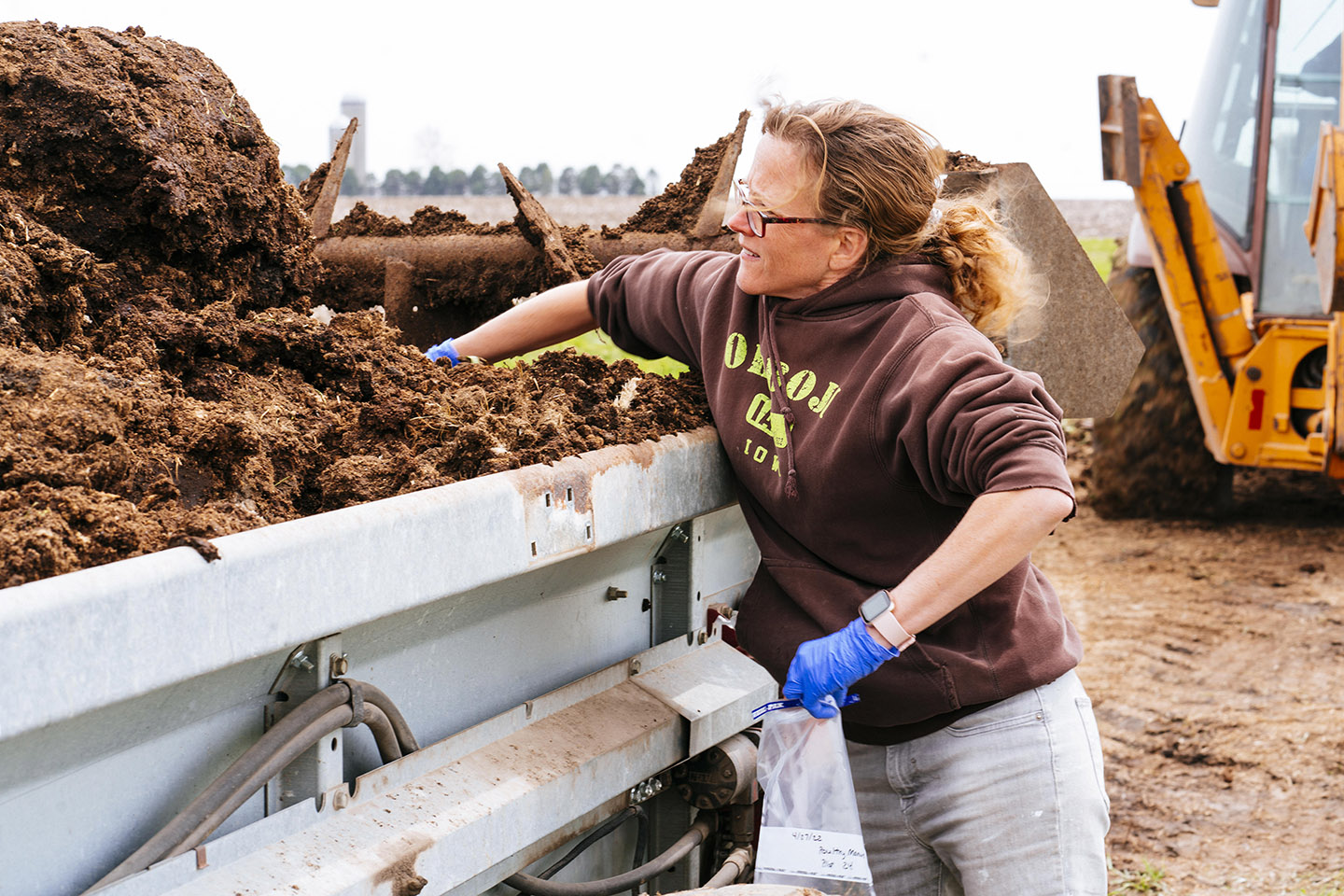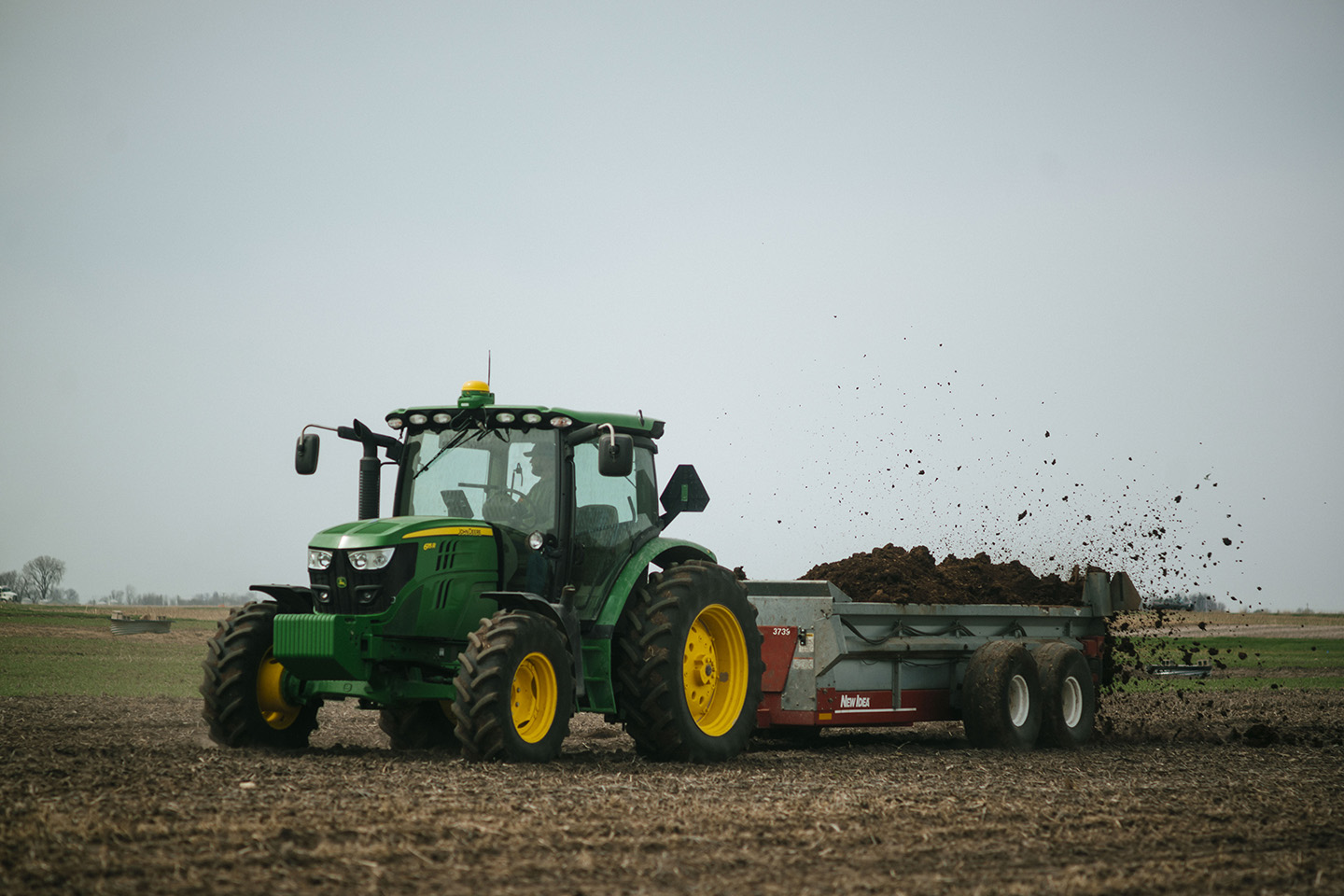
(Photo: Joseph Hopper/Iowa Soybean Association)
Researching nutrient and environmental aspects of poultry manure
July 1, 2022 | Kriss Nelson
We may never answer such questions as “What came first, the chicken or the egg?” or “Why did the chicken cross the road?” but a new study will unlock some answers about how poultry manure affects soils and provides nutrients that crops can best utilize.
Through a new multiyear study, Land Management for Improved Yield Environmental Resilience Sustainability (LAIYERS), researchers hope to learn more about nutrient availability to plants and poultry manure’s effect on overall soil health.
LAIYERS is the second generation of a study started in the late 1990s.
The Iowa Egg Council initiated both studies to understand poultry manure’s effects on water quality.
“When our study was first started in the 90s, poultry manure was considered a waste product,” says Michelle Soupir, interim associate dean, graduate college and professor & associate chair for research/extension at Iowa State University. “We want to figure out how much manure can be applied before impacting water quality and how to dispose of manure without building up phosphorous in the soil.” There was enough interest in establishing new field plots 20 years later, expanding on previous studies.
“The previous research only considered two manure application rates, and the plots were different sizes,” Soupir says. “We designed the new site to be a comprehensive study of the sustainability of poultry manure integrated into a system using best management practices.”
The study
LAIYERS includes 27 plots with a range of different applications using strip-till (including cover crops), splitting urea ammonium nitrate (UAN) fertilizer and leveraging varied manure application timings. There is an emphasis on not increasing phosphorus levels but rather improving soil health.
Researchers also want to determine if improved soil health management can mitigate the adverse effects of too little or too much water through extreme weather events and conditions.
“We are hoping to show there are benefits to the environment from a carbon perspective by using these management practices,” Soupir says. “We also want to demonstrate how we can manage these integrated systems to benefit both the plants and the ag economy.”

Cover crops
Soupir hopes the research will guide producers on best practices for integrating cover crops with manure.
“The cover crops can pick up the nutrients when we normally have bare soils, and we are trying to figure out when we can get the best cover crops to enrich the soil and protect the tile water,” she adds. “And when the cover crops are terminated, how can we make sure there are sufficient nutrients when the crops need them and minimize the losses when there isn’t any uptake by the crop?”
Additional UAN applications
The study also includes splitting the UAN application using a sidedress application in the spring.
“We are trying to look at some conservative systems that should be good for plant growth and development, and water quality. We will be working to give some confidence on how manure applications can work in this system and provide sufficient nutrients,” says Soupir.
Nutrient availability
Manure applications in the late fall to early winter are most common due to convenience. This study will evaluate the effectiveness of spring manure applications by applying the nutrients when the plants can most benefit.
A large part of the study is also understanding how manure mineralizes and becomes available to the plant. During this process, there is also an increased risk of manure leaching into drainage water, making risk assessment and management key priorities, Soupir says.
“If we can better understand when manure nutrients are available, it can also help us understand when to apply manure,” she adds.
Investing in research
Iowa Soybean Association farmer-members are interested in research, especially practical on-farm research such as LAIYERS, which focuses on the profitable production of high-quality soybeans under optimized manure management systems. That’s why it made sense to invest in the study, says Ed Anderson, ISA’s senior director of research.
“Soybean checkoff-funded research focuses on basic and applied science,” says Anderson. “This also includes breeding and agritechnologies to develop soybean genetics and cropping systems for optimizing integrated livestock and row cropping under changing climate and weather conditions. Michelle’s work complements these studies as an interesting on-farm field plot agronomic study.”
Back